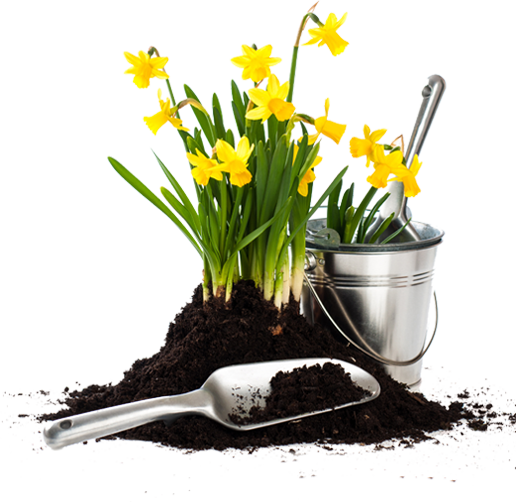What is Vermicompost?
Worm humus is the result of the digestive transformation of organic matter carried out by earthworms and is considered one of the best natural fertilizers available.
The use of this type of fertilizer dates back to ancient times. The Romans and even earlier the Egyptians used Vermicompost for their lush crops. The peculiarities of this compound were so appreciated in the land of the Nile that Cleopatra designated the earthworm as a sacred animal in order to protect it from human hands and ensure the natural fertilization of the soil. Currently in the USA, this fertilizer is aptly called “Black Magic.”
The earthworm, thanks to the powerful action of its digestive system, is able to bio-degrade organic matter in a few hours, a process that would naturally take several months, generating a product with a uniform granular consistency, a cylindrical shape, a dark brown or black color, and a pleasant scent of fresh soil.

Vermicompost contains a high amount of:
- Organic matter
- Humic acids
- Nitrogen
- Phosphorus
- Fulvic acids
- Potassium
- Enzymes
- Microelements
- Amino acids
- Glomalin
all of which promote the growth and quality of crops.

Benefits of Vermicompost:
- Increased production;
- Water savings, due to its high water retention capacity;
- Enhanced seed germination capacity;
- Improved aeration;
- Nutrient retention capacity;
- Reduced soil erosion.
- Enrichment of the soil with essential organic and mineral substances;
- Greater absorption of nutrients in assimilable form;
- Preservation and increase of organic content in the soil.
- Reduction of post-transplant shock;
- Stimulation of mycorrhizal formation;
- Increased presence of microbial flora;
- Greater resistance to parasites and plant diseases;
- Detoxification of soils contaminated by chemicals;
- Activation of root growth and strengthening in plants.
How it is used:
Before knowing how to use Vermicompost, it is fundamental to understand the contribution it offers to both food crops and ornamental gardening (lawns, plants, and flowers).
General Considerations:
- It is not contraindicated for any plant; an eventual excess of worm humus will never burn the plants;
- It is a fertilizer, not soil. For this reason, like any other fertilizer, it must be used with other types of plant substrates;
- Application is always done on the surface, except for transplants, where the humus can be added directly to the plant’s root system to avoid stress thanks to its high hormone content (auxins, gibberellins, cytokinins).
Recommended Doses by Crop Type
Vegetables
- For individual plants: 50 g per plant/month.
- Base fertilization: 500 g/m2.
- In rows: from 1 kg per linear meter.
It is recommended to increase the dose in solanaceous vegetable crops.
Olive Trees
It will depend on the size of the olive trees and their age.
- Young: from 0.6 to 1 kg per plant twice a year in spring and autumn.
- Adult: from 1 to 3 kg per plant twice a year in spring and autumn.
Surface fertilizer: from 500 to 1000 kg/ha.
Fruit Trees
- Adults: from 2 to 4 kg per tree.
- Young plants: from 1 to 2 kg per tree.
- Planting: from 1 to 2 kg per tree.
Vineyards
It will depend on the types of vines and the production system.
- Per vine: from 400 to 600 g.
- Planting / uprooting: from 1 to 1.5 kg per vine.
- Surface fertilizer: from 1000 to 2000 kg/ha.
Lawn
- Seeding: from 300 to 500 g/m2 with maintenance of 100 to 200 g per year, distributed every 6 months.
- Sod: from 150 to 250 g/m2.
Flowerpots or pots
- 50 g (3 tablespoons) small pot.
- 150 g (10 tablespoons) large pot.
Repeat the dose every month.
Flowers
- Roses, carnations, and geraniums: from 400 to 500 g/m2.
- Others: from 300 to 400 g/m2.
Ornamental
Depending on age and size.
- Ornamental trees: from 1 to 3 kg per tree and year.
- Hedges, shrubs, and bushes: from 1 to 2 kg per plant and year divided into 2 applications (spring and autumn).
Tree Transplants
Add 200/300 g of humus in the hole in contact with the roots, add 1000 g during the filling of the hole.
Repotting and Transplants
Mix 20% humus with the chosen soil for pot transplantation.
Add 100 g of humus in the hole where the plant will be transplanted.
All the dosages described are recommended mainly for slightly rich and naturally nutrient-rich soils. Therefore, the quantity should be increased or decreased based on the richness, nutritional status of the plants, vegetative period, and any other exceptional characteristics.
An excess of worm humus will never burn your crops.
Technical Data Sheet
Worm humus or vermicompost produced by Lombricoltura Siciliana is a natural organic fertilizer obtained from the best matured bovine manures, transformed by earthworms.
The vermicompost from Lombricoltura Siciliana is rich in humic acids, fulvic acids, enzymes, amino acids, phyto-hormones, bacteria, microelements, which, in a synergistic and balanced way, nourish and stimulate plants, making them more resistant to pests and diseases.
It also contributes to:
- Balanced long-term nutrient supply to plants.
- Improvement of soil structure.
- Creation of an ideal habitat for seeds and plants.
- Avoiding transplant shock.
- Reducing root asphyxiation by making the soil soft and aerated.

Lombricoltura Siciliana carries out the entire production process indoors and under controlled conditions to obtain a product of the highest quality and free from infesting agents. The product is 100% derived from bovine manure and will not burn the plant roots even when used in large quantities.
The use of worm humus or vermicompost is allowed in organic farming and falls under the category of “Amendment – Vermicompost from manure” according to Annex 2.11 D.lgs. 75/2010.
